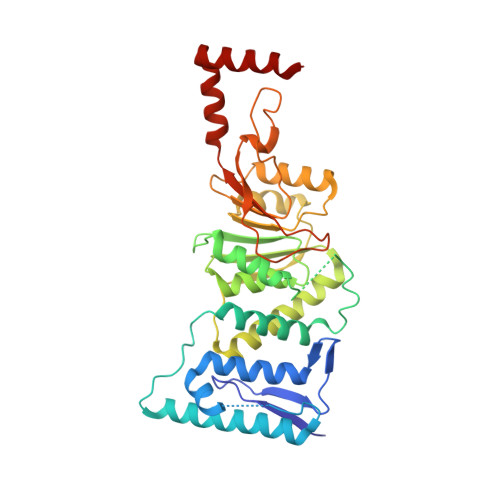Structure-Guided DOT1L Probe Optimization by Label-Free Ligand Displacement.
Yi, J.S., Federation, A.J., Qi, J., Dhe-Paganon, S., Hadler, M., Xu, X., St Pierre, R., Varca, A.C., Wu, L., Marineau, J.J., Smith, W.B., Souza, A., Chory, E.J., Armstrong, S.A., Bradner, J.E.(2015) ACS Chem Biol 10: 667-674
- PubMed: 25397901
- DOI: https://doi.org/10.1021/cb500796d
- Primary Citation of Related Structures:
4WVL - PubMed Abstract:
The DOT1L lysine methyltransferase has emerged as a validated therapeutic target in MLL-rearranged (MLLr) acute leukemias. Although S-adenosylmethionine competitive inhibitors have demonstrated pharmacological proof-of-principle in MLLr-leukemia, these compounds require further optimization to improve cellular potency and pharmacokinetic stability. Limiting DOT1L inhibitor discovery and ligand optimization have been complex biochemical methods often using radionucleotides and cellular methods requiring prolonged culture. We therefore developed a new suite of assay technologies that allows comparative assessment of chemical tools for DOT1L in a miniaturized format. Coupling these assays with structural information, we developed new insights into DOT1L ligand binding and identified several functionalized probes with increased cellular potency (IC50 values ∼10 nM) and excellent selectivity for DOT1L. Together these assay technologies define a platform capability for discovery and optimization of small-molecule DOT1L inhibitors.
Organizational Affiliation:
†Department of Medical Oncology, Dana-Farber Cancer Institute, Boston, Massachusetts, United States.


















